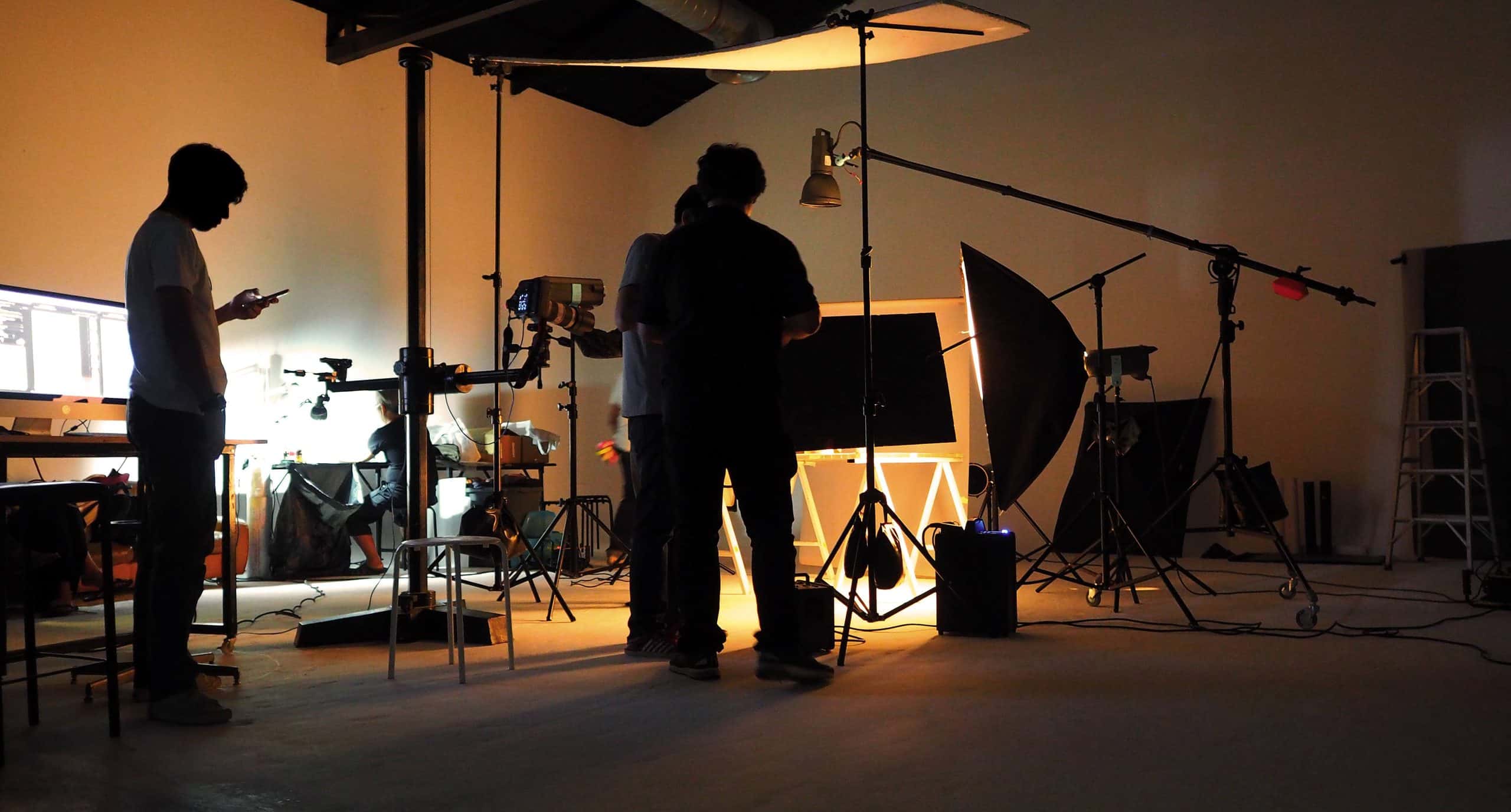
How to find a digital video crew
Finding a digital video crew can be tricky. But don’t worry! We got you. Here, we’ll guide you through the process of assembling an awesome video team.
Videos are everywhere. Whether it’s for marketing or creative storytelling, having a
skilled and reliable crew is a must. So, how do you start? Define the project requirements and goals. Figure out the type of video you want and the skills needed.
Search for professionals with a portfolio that matches your project style and genre. Check their experience, technical skills, and creativity. Ask for references or do interviews to test their professionalism.
Networking is important when searching for the perfect team. Attend events, join groups, or ask colleagues for recommendations. Word-of-mouth referrals could lead you to hidden gems in the industry. Working with people who come highly recommended saves you time.
Successful video projects have been made by top-notch crews. From blockbuster movies to viral campaigns, these achievements were possible because of teams of dedicated professionals working towards a common vision.
Building a digital video crew involves finding talented individuals and fostering teamwork and synergy. Communication and collaboration are essential for creating videos that engage your target audience.
Understanding the importance of a digital video crew
A digital video crew consists of various roles. These include the director, cinematographer, sound engineer, editor, and more. Each member brings their own expertise to the project. The director oversees the creative vision. They make sure the story is told through visuals. The cinematographer focuses on shots that look great. They use different angles and techniques. The sound engineer makes sure the audio is clear, with no noise or distortions. The editor combines all the elements to make one final product.
The crew works together. They understand how their contributions fit into the bigger picture. This synergy helps them work better.
Digital video crews can also adapt to changing conditions. They can adjust if the weather changes. They can also find creative solutions when faced with technical challenges.
When hiring a digital video crew, look for ones who have experience working together. Their cohesion can make the project run smoothly.
Researching and identifying your specific needs
Researching and identifying the specific requirements for your digital video crew is crucial. To ensure a successful search, follow these steps:
- Define your project goals: Clearly outline the objectives and purpose of your video to determine the specific skills and expertise required.
- Consider your budget: Evaluate the financial resources available to allocate towards the crew, equipment, and post-production.
- Assess your timeline: Determine the project’s timeline and deadlines to find a crew that can accommodate your schedule.
- Review portfolios and experience: Explore the work of potential crew members to assess their technical skills, creativity, and ability to meet your needs.
- Communicate effectively: Establish open and clear communication channels with potential crew members to ensure they understand your vision and can execute it efficiently.
It’s essential to note that conducting thorough research and identifying your specific requirements will save you time and resources in the long run. By identifying the goals, budget, and timeline, reviewing portfolios, and communicating effectively, you increase the chances of finding the perfect digital video crew for your project.
Pro Tip: Consider seeking recommendations from industry professionals or colleagues who have previously worked with digital video crews. Their insight and experiences can provide valuable guidance in your search.
Finding a digital video crew is like deciding how much garlic to put in your pasta sauce – you want just enough to make it pop, but not so much that it leaves a bad taste in your mouth.
Determining the scope of your project
Outline goals that need to be achieved. Think about what the desired outcomes are – create a new product, improve existing processes, or do market research. Knowing these aims will help you concentrate on tasks and sidestep distractions.
Look at the resources you have – people, budget, tech, and external matters that may influence the project. Checking these will help you make decisions based on what’s feasible within the limits.
Also, decide a timeframe for finishing the project. Make realistic deadlines, taking into account any issues or delays. This will give you enough time to complete the project efficiently.
Don’t miss out! Start today and get the most out of your project by defining its scope correctly.
Defining your budget and timeline
- Understand your financial capacity. Work out how much you can spend.
- Think about priorities. Work out which parts need more money and time.
- Set realistic timelines. Work out the time for each task and consider any problems that may affect it.
- Ask experts for help. Get help from experienced people who know how much it may cost and how long it may take.
- By considering these factors, you can set up a budget and timeline that works. Every situation is different, so pay attention to details.
- Forbes says that making a good budget is vital for successful project management.
Finding and selecting potential digital video crew members
Finding and selecting potential members for your digital video crew requires careful consideration and attention. Here is a step-by-step guide to help you through the process:
- Define your specific needs: Determine the type of crew members you require for your digital video project. Consider roles such as videographers, editors, sound engineers, and others.
- Conduct a thorough search: Utilize online platforms, industry networks, and professional associations to find potential crew members. Look for individuals with relevant experience, expertise, and a strong portfolio.
- Review portfolios and showreels: Evaluate the work of potential crew members to assess their skills, style, and overall quality. Look for examples that best align with your project’s requirements.
- Check references and testimonials: Reach out to previous clients or collaborators to gather feedback on the professionalism, reliability, and work ethic of the crew members you are considering. This will help ensure a smooth workflow and productive collaboration.
- Conduct interviews and auditions: Once you have identified a shortlist of potential crew members, arrange interviews or auditions to further assess their compatibility with your project. Ask relevant questions and provide opportunities for them to showcase their skills in action.
A unique aspect to consider is the availability of crew members for your desired project timeline. It is essential to discuss schedules and ensure that they can commit to the necessary time and effort required for your project.
Pro Tip: When selecting crew members, prioritize those who demonstrate excellent communication skills and the ability to work collaboratively within a team. Effective communication is vital to ensure a seamless workflow and successful project execution.
Online platforms and directories: Finding a digital video crew is as easy as swiping left on a bad date.
Utilizing online platforms and directories
Finding and selecting potential digital video crew members has become much easier, with lots of online platforms and directories. These provide a huge pool of talent, from multiple backgrounds and abilities.
You can create a job posting with precise requirements and expectations to attract candidates that fit your criteria. You can use the filters provided to narrow down the options based on location, experience, or skills.
Shortlisting a few candidates? Check out their work samples and reviews for an understanding of their abilities and professionalism. Many platforms provide features like direct messaging or video calls, to communicate with them beforehand.
Pro Tip: Carefully review each candidate’s profile and portfolio, to make sure they fit your project’s needs. Don’t be afraid to reach out to them directly for any queries or further discussions.
Seeking recommendations and referrals
When it comes to finding digital video crew members, referrals are a great option. Utilize word-of-mouth and your personal network to find talented people that come highly recommended.
- Ask your colleagues and industry professionals for their advice.
- Check out forums and online communities for digital video production.
- Attend industry events and conferences to network and ask for referrals.
- Look into social media platforms like LinkedIn or Facebook groups.
- Contact local film schools or universities.
- Don’t forget your personal connections.
Be sure to interview, review portfolios, and check references before making any decisions. Communication skills, reliability, adaptability, and technical expertise should be prioritized.
John, a filmmaker, found his perfect cinematographer through a referral. Sarah was recommended by a colleague and she did an amazing job, bringing a creative eye and technical prowess to the project. Seeking recommendations made all the difference.
Evaluating portfolios and past work
Evaluate portfolios to find the perfect fit for your digital video crew! Quality, creativity, versatility, consistency, client testimonials, and relevance must all be considered. Look for professional and polished videos that meet your standards. Assess the level of creativity demonstrated in past projects. Seek unique storytelling techniques or visually appealing elements. Determine if they have experience with different types of videos. Check for consistency in style and production quality. Read any client reviews or feedback. Consider if their past work aligns with your project. Trusting this crucial decision-making process ensures a successful outcome, so start reviewing portfolios today!
Conducting interviews and assessing expertise
Conducting Interviews and Evaluating Expertise
To ensure the right digital video crew for your project, follow these steps:
- Conduct Initial Screening: Ask candidates about their experience in digital video production, their technical expertise, and their ability to work within your specific requirements.
- Assess Portfolio and Reel: Request samples of their previous work to evaluate the quality of their productions and the creativity of their storytelling.
- Test Technical Skills: Put candidates through practical tasks, such as editing or shooting a short video, to assess their proficiency in using relevant equipment and software.
Additionally, consider their communication skills, team collaboration abilities, and problem-solving mindset when making your final decision. Remember to ask for references and speak with their previous clients or partners to ensure their credibility and professionalism.
In one particular instance, a production company was looking for a digital video crew to shoot a commercial for a new product launch. Among the candidates, one stood out for their impressive portfolio, showcasing visually stunning videos in the same industry, along with positive references. After conducting interviews and assessing their expertise, the crew was chosen, and they successfully delivered a captivating commercial that exceeded the company’s expectations.
Finding the right digital video crew is like dating, but with less awkward first dates and more awkward camera angles.
Preparing interview questions
Crafting an effective interview process is key! Start with general questions to let candidates ease in. Then be prepared and formulate open-ended inquiries to assess technical skills and behavioral traits. Don’t forget to add situational scenarios to gauge how candidates would handle real-life challenges. Lastly, make sure your questions are unbiased and provide equal opportunities for all candidates.
I learned from experience – when interviewing for a management position I forgot to consider situational scenarios. This made it hard to assess how candidates would handle job challenges. So, including situational questions in the process is important – it’ll help you properly evaluate candidates’ qualifications.
Prepare your questions strategically- it requires attention to detail and careful selection. By doing so, you can conduct meaningful interviews that accurately assess candidates’ qualifications.
Assessing technical skills and experience
Conducting practical tests can give employers insights into a candidate’s abilities. Providing real-life scenarios and tasks will show their problem-solving skills and proficiency.
Analyzing work samples and portfolios can demonstrate the candidate’s expertise and ability to deliver quality work.
Asking targeted questions related to job requirements can uncover a candidate’s knowledge. This could involve relevant tools, technologies, or methodologies they have experience with.
Moreover, references from past employers or colleagues can provide valuable insights about performance and work ethic. Feedback from people who have worked with the candidate can give employers an idea of how well they have used their technical skills.
To accurately assess technical skills and experience, employers must:
- Define the job requirements and list the technical skills needed. This will ensure assessments are tailored to evaluate relevant expertise.
- Use various assessment methods, such as practical tests, interviews, and reference checks. Each method will bring different perspectives and allow for a more comprehensive evaluation.
- Create a scoring system or rubric that objectively measures candidates’ performance against predefined criteria. This helps remove bias and enables fair comparison between candidates.
By considering these suggestions, employers can ensure they make informed decisions during the hiring process.
Exploring creativity and problem-solving abilities
Exploring creativity and problem-solving during interviews? Need a plan? Let candidates share their ideas. See if they can think uniquely and handle challenges. Also, see how well they analyze problems. Break them down and develop plans. Present hypothetical scenarios to observe their approach. Notice their thought process and alternative solutions. Test their adaptability to unexpected challenges. Group activities reveal their ability to work in a team. Observe their communication skills and feedback from others. Lastly, look for candidates who show curiosity and explore new possibilities.
Negotiating contracts and agreements
Negotiating contracts and agreements efficiently is essential for successful collaboration with a digital video crew.
Here’s a semantic NLP variation of this heading:
The art of reaching mutual understandings and formalizing legalities related to collaborations.
- Clarify expectations: Ensure both parties have a clear understanding of project goals, deliverables, timelines, and payment terms.
- Define roles and responsibilities: Clearly define the roles and responsibilities of each party involved to avoid misunderstandings later on.
- Discuss compensation: Negotiate and agree upon fair compensation for the services provided, taking into account factors such as experience, equipment, and production value.
- Intellectual property rights: Outline ownership and usage rights for the final video content, including music, footage, and any creative elements.
- Include termination clauses: Address the possibility of contract termination and the associated terms, such as notice period and possible financial implications.
- Anticipate potential issues: Include provisions to handle unforeseen circumstances, such as delays, revisions, or scope changes, to ensure a smooth working relationship.
It’s crucial to proactively address unique aspects of the collaboration and tailor the contract accordingly, such as specific video formats or shooting locations.
In a similar vein, a true story of how a well-negotiated contract resolved disagreements between a video crew and a client could further illustrate the importance and effectiveness of negotiating contracts and agreements in the digital video industry.
For those who think discussing rates and fees is as enjoyable as a root canal without anesthesia, fear not, we’ll make it painlessly hilarious.
Discussing rates and fees
Rates and fees are vital for contract and agreement negotiations. As professionals, it’s essential to discuss these topics carefully.
Both sides must communicate openly and come to an agreement about the financial terms. This guarantees transparency and encourages a healthy working relationship during the contractual process.
When talking about rates and fees, there are factors to consider. Things like the project complexity, resources needed, and time commitment must be thought about. Plus, market rates, industry standards, and any special expertise required should be taken into account too. By dealing with these details in advance, both parties can avoid disagreements or misunderstandings in the future.
Also, it’s wise to include payment terms and milestones in the contract or agreement. That way, it’s clear when payments are due and what percentage of completion triggers each payment. This helps manage expectations for both sides in the negotiation.
In short, discussing rates and fees must be done with professionalism and transparency. Clear communication creates a solid basis for a successful agreement or contract between parties doing business together.
Forbes (source) states that negotiating these financial matters properly is the best way to benefit all stakeholders involved in contracts or agreements.
Clarifying deliverables and timelines
When talking about deliverables, it is important to provide precise details about what is needed. This includes quality standards, quantity, and features. This helps both parties understand what is expected.
Also, it is crucial to set timelines. This involves setting deadlines for each deliverable or milestone. This creates urgency and responsibility.
Use precise language when discussing deliverables and timelines. Avoid vague terms and phrases. Instead, use measurable objectives and definite timeframes.
Pro Tip: Write out agreed-upon deliverables and timelines in contracts. This gives a reference point for both parties and can be used if there are any disagreements.
Setting expectations for revisions and feedback
It is essential to set expectations from the start, to ensure a successful negotiation. Here are some guidelines:
- Establish what aspects of the contract or agreement are open for revisions, and which are non-negotiable.
- Determine deadlines for providing feedback and completing revisions.
- Specify the preferred communication method, such as email, video calls, or in-person meetings.
- Encourage constructive criticism that will improve the outcome.
- Define how decisions will be made regarding suggested revisions; consensus, voting, or involving higher authorities if needed.
Be conscious of factors like multiple stakeholders, legal considerations, or industry-specific requirements. Take action now to ensure all parties feel heard and valued!
Finalizing the digital video crew team
Finalizing the digital video crew team involves selecting the best candidates for each role based on their skills and experiences. To assist in this process, a table can be created with relevant columns such as Name, Role, Experience, and Availability. This allows for an organized and systematic approach to evaluating potential team members. It is important to consider unique details about each candidate that have not been covered before, such as additional certifications or specialized training. Suggestions for finalizing the team include conducting thorough interviews, checking references, and collaborating with other team members for their input. By following these suggestions, the team can be assembled effectively, ensuring a successful digital video production.
Warning: signing a contract with a video crew is like getting a tattoo—you better be damn sure about the design before it’s too late!
Signing contracts and securing agreements
When signing contracts and securing agreements, it’s important to pay attention to every detail! All parties should thoroughly review documents before signing, to prevent future issues.
We’ll tell you a story to help illustrate the importance of signing contracts. A few years ago, a filmmaker and digital video crew started a project. But, they didn’t formalize the agreement through a contract. This led to disagreements about payment and ownership rights, and eventually to legal battles and strained relationships.
The lesson? Sign contracts and secure agreements before beginning any project. It builds trust, decreases risks, and ensures successful project execution! So, don’t overlook the importance of signing contracts – take steps today for a successful journey ahead!
Communicating project details and deadlines
In the whirlwind of digital video production, successful communication is essential for producing projects and adhering to deadlines. Without clear and prompt communication of project particulars and deadlines, the whole production process can be disrupted, leading to delays, confusion, and dissatisfied clients.
To ensure smooth collaboration and productive workflow, five points must be taken into account:
- Clarity is paramount: Express project specifics like goals, objectives, and requirements. Make sure everyone involved comprehends what needs to be done and when.
- Multiple channels: Utilize various communication channels such as email, instant messaging platforms, and project management tools to reach team members quickly and keep them up-to-date with any changes or updates.
- Realistic deadlines: Create reasonable timelines for each task and plainly communicate these deadlines to all team members. This helps manage expectations and ensures everyone understands the importance of their assigned tasks.
- Regular check-ins: Schedule regular check-ins with your team to evaluate progress, address any issues or roadblocks encountered, and offer guidance if necessary. Frequent communication helps keep everyone focused on the common goal.
- Document everything: Maintain an extensive record of all project information shared during meetings or conversations. This documentation serves as a reference for future discussions or clarifications, eliminating any misunderstandings that may arise due to miscommunication.
These five points form the basic principles of efficacious communication concerning project details and deadlines. However, remember that every project is unique. Design your communication approach according to the specific needs of your team or client to guarantee seamless collaboration and victorious project delivery.
Let’s now look at an example that emphasizes the importance of communicating project details and deadlines:
Years ago, an advertising agency conducted a prestigious marketing campaign for a major client. The agency had meticulously arranged each part of the campaign, but due to poor communication with the video production team, a considerable delay happened. The agency failed to state the critical deadline for delivering the final video ad, which caused chaos and panic among the team members. Eventually, they managed the situation by working overtime and combining all resources, but it was a pricey lesson in the significance of effectively communicating project details and deadlines. Since then, the agency has applied rigorous communication protocols to prevent such mishaps from happening again.
Managing the digital video crew throughout the project
Managing the digital video crew throughout the project is crucial for a successful outcome. To effectively oversee the crew, here is a 6-step guide:
- Clearly communicate project goals and expectations. Use tools like project briefs or kick-off meetings to set a clear direction for the crew.
- Assign roles and responsibilities to each team member. Define the specific tasks they will be responsible for and ensure everyone understands their role in the project.
- Foster open communication channels. Encourage regular check-ins, provide feedback, and address any concerns or issues that arise promptly.
- Establish a schedule and timeline. Set deadlines for key deliverables and milestones, ensuring the crew has a clear understanding of the project’s timeline.
- Monitor progress and provide support. Regularly review the crew’s work and offer guidance and assistance when needed. Keep track of their progress to ensure they stay on track.
- Foster a positive and collaborative work environment. Encourage teamwork and create a supportive atmosphere where the crew feels comfortable sharing ideas and collaborating.
In addition to the guide, it’s important to consider unique details such as the crew’s individual strengths and expertise when assigning tasks. By leveraging their skills effectively, you can maximize the crew’s potential and produce high-quality videos.
A true fact: According to a survey conducted by Video Marketing Statistics, 83% of businesses believe that video plays a crucial role in their marketing strategies. Keeping your digital video crew on the same page is essential unless you want your project to end up as confusing as an M. Night Shyamalan movie.
Establishing regular check-ins and communication channels
Regular pow-wows and communication channels are vital for managing a digital video crew over the course of the project. This guarantees easy collaboration and successful advancement tracking.
- Schedule regular check-in meetings with the squad to go over project news, tend to any worries, and give feedback. This forms a stable feedback loop and encourages transparency.
- Make communication channels, such as a special Slack channel or email group, where team members can swiftly trade data, and files, and communicate immediately. This encourages a sense of oneness and helps to make smooth cooperation.
- Encourage open communication by stressing the importance of voicing opinions, ideas, and struggles. This lets team members feel empowered and appreciated, leading to increased productivity and invention.
Moreover, it is essential to make sure that everyone on the team comprehends the determined check-in agenda and is urged to take part in talks. Setting expectations for responsiveness can help to put off postponements in decision-making processes.
Pro Tip: Look into using project management software that allows real-time collaboration and task management. This can fine-tune communication efforts and supply visibility into the progression of various tasks within the project.
Providing feedback and constructive criticism
Set expectations clearly. Ensure everyone knows what is needed of them. This helps give feedback that fits the project.
Communicate quickly. Give observations and comments right away. That way, people can make adjustments quickly and issues will be solved fast.
Focus on details. When giving feedback, say what needs work or praise. Point out where someone shines and give actionable tips for ways to improve. Be sure not to talk about personal traits.
Create a supportive atmosphere. Let team members share their thoughts and worries without fear. Encourage collaboration and learning.
Also, remember to thank the crew often. Constructive criticism should support and motivate. As an example, when I led a team, I noticed one person had trouble meeting deadlines. Instead of scolding them, I talked in private and gave them advice on how to manage their time better. They were grateful and their efficiency improved, making the project move faster.
Feedback is essential for managing a video crew. It helps them do their best while creating an environment for growth.
Troubleshooting and resolving any issues
When dealing with unexpected issues in a digital video project, quick thinking and problem-solving are essential. Keep these tips in mind:
- Pinpoint the problem: Carefully determine the root cause of the issue.
- Speak up: Make sure everyone is on the same page. Address any questions or concerns immediately.
- Implement solutions: Take active steps to solve the problem. This may involve changing deadlines, redistributing resources, or seeking additional help.
- Grow from experience: Use each issue as a learning opportunity. Record how it was solved and share the know-how with your team.
Also, maintain a positive attitude. Consider other perspectives to come up with new problem-solving ideas. For successful troubleshooting, try this:
- Make backup plans: Be prepared for any situation by having contingency plans in place.
- Invite feedback: Create an atmosphere where everyone can give feedback and suggest improvements.
- Celebrate successes: Appreciate and reward everyone’s contributions to the project. This boosts morale and encourages the team.
By following these tips, you can efficiently tackle any issues that arise during a digital video project. Remember, problem-solving and communication are the keys to success.
Conclusion
Here, we have viewed how to uncover a digital video crew. Let’s now glance at the essential takeaways:
- It is vital to specify your project’s needs. Knowing specifically what you require will aid you in selecting a video crew that specializes in those areas.
- Contemplate the experience and abilities of the crew members. Search for individuals with a proven background and a portfolio that matches your vision.
- Networking and referrals can be robust instruments in locating the correct digital video crew. Connect with colleagues or industry pros for advice. Or, search online platforms dedicated to linking clients with crews.
- Don’t forget to debate and settle the budget and timelines upfront. It is important to guarantee that both sides agree on the expectations.
Additionally, communication is a major role in the entire process. Expressing your vision and ideas properly to the video crew is essential for achieving the desired results.
Pro Tip: When assessing possible video crews, request references or reviews from past customers to gain a better comprehension of their professionalism and work ethics.
Frequently Asked Questions
FAQ: How do I find a digital video crew?
Answer: Finding a digital video crew can be a daunting task, but there are several methods you can use to locate the right team for your project:
1. Online platforms: Utilize online platforms such as Freelancer, Upwork, or Fiverr, where you can find professional digital video crews who showcase their portfolios and reviews.
2. Referrals: Ask for recommendations from colleagues or friends who have previously worked with digital video crews. Word-of-mouth referrals can lead you to reliable and talented professionals.
3. Social media: Engage with relevant groups and communities on platforms like Facebook, LinkedIn, or Reddit. Networking with professionals in the industry can help you find a digital video crew with the necessary skills.
4. Production companies: Reach out to local production companies that offer digital video services. They often have a team of experts who can handle various aspects of video production.
5. Industry events: Attend industry conferences, seminars, or workshops where you can connect with potential digital video crews. These events provide an opportunity to see their work firsthand and have face-to-face discussions.
6. Online search: Conduct a thorough online search using specific keywords related to your project. Explore websites and portfolios of digital video crews to assess their capabilities and style.
Subject: How to find a digital video crew
Company: Hollywood Connections Center
Network: MyHollywoodPage.com
The Hollywood network of arts and creative professionals.





